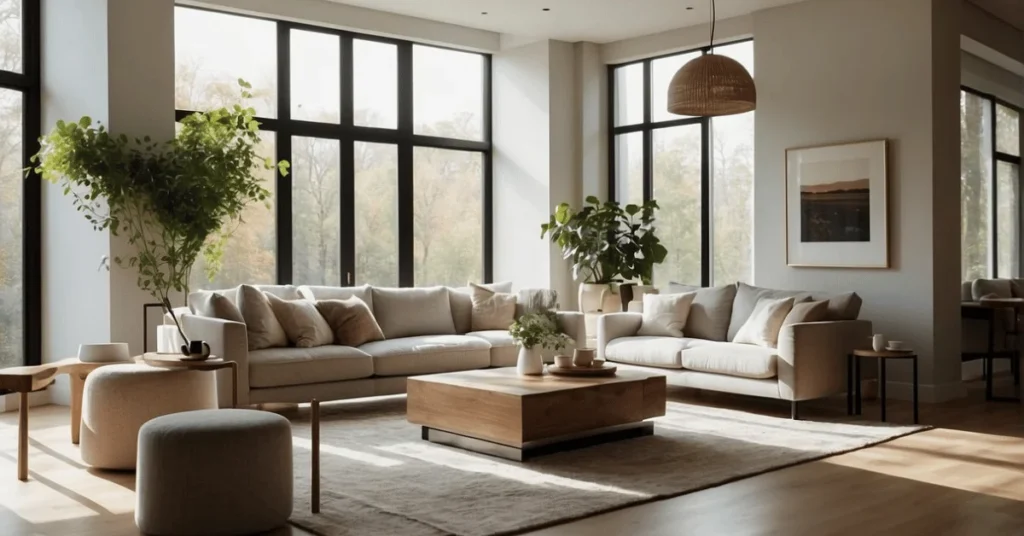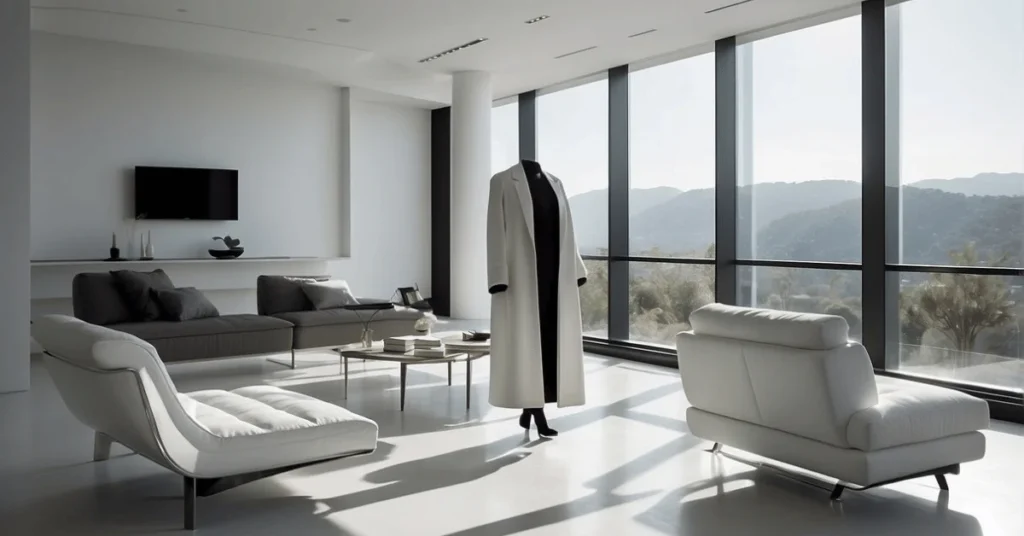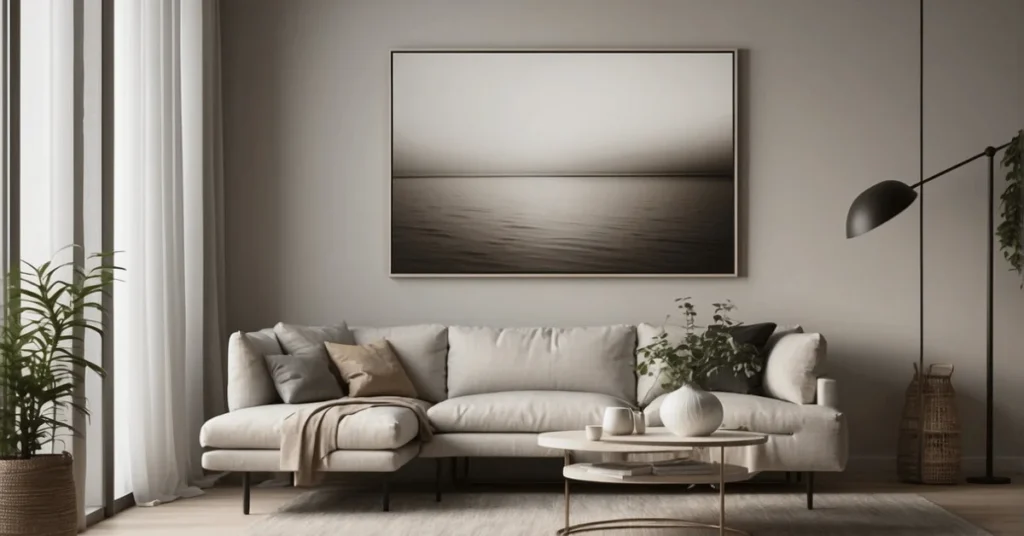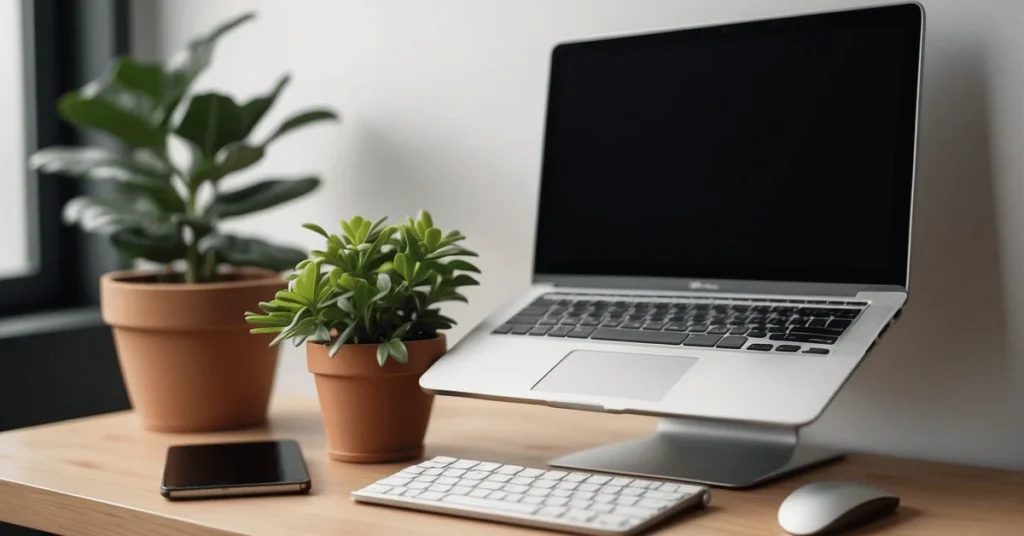Minimalism is a design and lifestyle movement that has taken the world by storm. It’s a philosophy that embraces simplicity, the idea that less is more, and a mindset that values experiences over material possessions. In recent years, a new trend has emerged within the minimalist movement: aesthetic minimalism. This approach to minimalism focuses on the beauty and elegance of simplicity, incorporating minimalist design into all aspects of life, from fashion to home decor.
At its core, aesthetic minimalist embraces to create a sense of calm and tranquility in its life. By eliminating clutter and excess, you can create a space that is both visually appealing and functional. This approach to minimalism is all about creating a cohesive and harmonious environment that is both calming and inspiring.
If you’re looking to embrace the aesthetic minimalist lifestyle, there are a few key principles to keep in mind. First and foremost, it’s important to focus on quality over quantity. Invest in high-quality pieces that will last a lifetime, rather than buying cheap items that will need to be replaced frequently. Secondly, simplicity is key. Stick to a neutral color palette and avoid unnecessary embellishments or patterns. Finally, remember that less is more. Embrace the beauty of negative space and keep your home and wardrobe streamlined and clutter-free.
Key Takeaways
- Aesthetic minimalist embraces a design and lifestyle movement that focuses on the beauty and elegance of simplicity.
- This approach to minimalism is all about creating a cohesive and harmonious environment that is both calming and inspiring.
- To embrace the aesthetic minimalist lifestyle, focus on quality over quantity, simplicity, and the beauty of negative space.
Philosophy of Minimalism
At its core, minimalism is about simplicity and reduction. It’s a design and lifestyle philosophy that emphasizes the idea of “less is more.” Minimalism is all about removing the excess and focusing on the essentials. It’s about creating a sense of calm and tranquility by eliminating the unnecessary.
Defining Minimalism
Minimalism is often associated with a clean and simple aesthetic. It’s about using a limited color palette, simple shapes, and uncluttered spaces. But minimalism is more than just a design style. It’s a way of thinking that can be applied to all areas of life.
Minimalism is about stripping away the excess and focusing on what’s truly important. It’s about being intentional with our time, our possessions, and our relationships. By simplifying our lives, we can create more space for the things that matter most.
Minimalism as a Lifestyle
Minimalism is not just a design trend, it’s a lifestyle. It’s about living intentionally and being mindful of our choices. It’s about creating a life that is simple, timeless, and meaningful.
Living a minimalist lifestyle means focusing on the things that bring us joy and letting go of the things that don’t. It’s about being intentional with our time, our possessions, and our relationships. By simplifying our lives, we can create more space for the things that matter most.
Aesthetic Minimalist Design

When it comes to interior design, there are many styles to choose from. One style that has gained popularity in recent years is aesthetic minimalist design. This design style is characterized by its emphasis on simplicity, functionality, and clean lines. In this section, we will explore the principles of minimalist design and the influence of minimalist art on this style.
Principles of Minimalist Design
At the heart of aesthetic minimalist design are the principles of simplicity and functionality. This means that elements in a room should serve a purpose and be essential to the overall design. In addition, minimalist design often incorporates neutral colors, such as white, beige, and gray, to create a clean and calming atmosphere.
Clean lines are another hallmark of minimalist design. This means that furniture and other elements in a room should be simple and streamlined, with no unnecessary ornamentation. For example, a minimalist sofa might have a simple, rectangular shape with no decorative details.
Influence of Minimalist Art
Minimalist art has had a significant influence on minimalist aesthetic design. Artists like Frank Stella, Donald Judd, and Agnes Martin created works that were characterized by their simplicity and lack of ornamentation. These artists used simple geometric shapes and neutral colors to create works that were both beautiful and functional.
Minimalist Fashion

When it comes to personal style, minimalist fashion is a timeless and elegant choice. Minimalist fashion is all about simplicity, with a focus on clean lines, neutral colors, and high-quality materials. In this section, we’ll explore the basics of minimalist fashion, including how to create a capsule wardrobe and the most influential minimalist designers.
Creating a Capsule Wardrobe
One of the key principles of minimalist fashion is the capsule wardrobe. A capsule wardrobe is a collection of essential items that can be mixed and matched to create a variety of outfits. The idea is to invest in high-quality, versatile pieces that will last for years, rather than constantly buying new items that go out of style.
To create a capsule wardrobe, start by taking inventory of your current wardrobe and identifying the pieces that you wear most often. Then, invest in a few key pieces that can be worn in a variety of ways, such as a well-tailored blazer, a classic white shirt, and a pair of high-quality jeans. Stick to a neutral color palette, such as black, white, gray, and beige, to ensure that all of your pieces can be mixed and matched.
Influential Minimalist Designers
Two of the most influential minimalist designers in fashion history are Jil Sander and Helmut Lang. Jil Sander is known for her minimalist aesthetic, with a focus on clean lines, neutral colors, and luxurious fabrics. Helmut Lang is also known for his minimalist designs, with a focus on simple, elegant silhouettes and high-quality materials.
Other influential minimalist designers include Phoebe Philo, who was the creative director at Céline, and Calvin Klein, who is known for his minimalist designs in both fashion and home decor. By studying the work of these designers, you can gain a better understanding of the principles of minimalist fashion and how to incorporate them into your own personal style.
Our Top Choices of Minimalist Home and Decor

As proponents of minimalist living, we understand the importance of choosing furniture and decor that are both aesthetically pleasing and functional. Here are our top picks for minimalist home and decor that can help you achieve a clean and clutter-free living space.
Furniture and Functionality
When it comes to furniture, we believe in investing in pieces that serve multiple purposes. For example, a sofa bed can be a great addition to a small living space, providing both seating and a comfortable sleeping area for guests. A coffee table with built-in storage can also be a great way to keep clutter at bay while still having a functional piece of furniture.
We also recommend choosing furniture made from natural materials such as wood or bamboo. These materials not only look great, but they are also sustainable and long-lasting. Additionally, furniture with clean lines and simple designs can help create a feeling of spaciousness in your home.
Decluttering and Organizing
Decluttering and organizing are essential to achieving a minimalist living space. We recommend starting with decluttering your home by getting rid of items that are no longer needed or used. This can be a daunting task, but it can be made easier by breaking it down into smaller, more manageable tasks.
Once you have decluttered, it’s important to have storage solutions in place to keep your remaining items organized. We recommend using storage solutions that are both functional and visually appealing, such as woven baskets or decorative boxes. This will help keep your home looking clutter-free while still having everything you need within reach.
Our Tips on How to Implement Minimalism

Are you looking to implement minimalist aesthetics in your home, but not sure where to start? Our tips will help you get started on your minimalist journey.
Starting Your Minimalist Journey
The first step in implementing a minimalist lifestyle is to start with practical and functional items. Paring down your belongings to only the essentials will help you make intentional choices about what you bring into your space. This means getting rid of items that no longer serve a purpose or bring you joy.
To achieve a minimalist look, it’s important to have no clutter. Clearing out your space will help you organize your belongings and create a calming environment. We recommend starting small, perhaps with one room at a time, and gradually working your way through the entire house.
Maintaining a Minimalist Space
Once you have achieved a minimalist space, it’s important to maintain it. This means staying organized and avoiding the temptation to accumulate unnecessary items. One way to do this is to adopt a “one in, one out” policy. For every new item you bring into your space, get rid of an old one.
Another way to maintain a minimalist space is to regularly assess your belongings and make sure they are still serving a purpose. If you find that you no longer need or use an item, consider donating it or selling it to someone who will appreciate it.
Frequently Asked Questions

How can I create a minimalist aesthetic in my home decor?
Creating a minimalist aesthetic in your home decor is all about keeping things simple and decluttered. Start by choosing neutral colors for your walls and furniture, and limit your decorations to a few statement pieces. Use natural materials like wood and stone to add texture and warmth to your space. Keep your surfaces clear and uncluttered, and invest in storage solutions that allow you to hide away any unnecessary items. Remember, less is more when it comes to creating a minimalist aesthetic.
What are the key principles of minimalist fashion?
The key principles of aesthetic minimalist fashion are simplicity, quality, and versatility. Choose classic, timeless pieces that can be mixed and matched to create a variety of outfits. Stick to a neutral color palette, and avoid anything too trendy or flashy. Invest in high-quality materials and well-made garments that will last for years to come. Remember, minimalist fashion is all about creating a streamlined, effortless look that emphasizes your natural beauty.
What distinguishes an aesthetic minimalist in art and design?
An aesthetic minimalist prefers simplicity, clarity, and precision in art and design. They often feature clean lines, geometric shapes, and a limited color palette. The focus is on the essential elements of the work, with no extraneous details or distractions. Minimalist art and design are often highly conceptual, with a strong emphasis on the viewer’s experience of the work.
Does an aesthetic minimalist loves digital spaces like wallpapers?
Yes, a aesthetic minimalist has also favorites in regards to digital spaces like wallpapers. Minimalist wallpapers often feature simple, geometric patterns, and a limited color palette. They are designed to be calming and unobtrusive, with no distracting elements. Minimalist wallpapers can be a great way to create a peaceful, meditative environment on your computer or mobile device.
What are the psychological benefits of embracing a minimalist aesthetic?
Embracing to become a aesthetic minimalist can have a number of psychological benefits. It can help reduce stress and anxiety by creating a calm, uncluttered environment. It can also promote mindfulness and awareness by encouraging you to focus on the present moment. Minimalism can also help you develop a greater appreciation for the things that truly matter in life, such as relationships and experiences.
How does one achieve become an aesthetic minimalist in personal style and appearance?
Achieving an aesthetic minimalist approach in personal style and appearance is all about keeping things simple and streamlined. Stick to a neutral color palette, and choose classic, timeless pieces that can be mixed and matched to create a variety of outfits. Avoid anything too trendy or flashy, and focus on high-quality materials and well-made garments that will last for years to come. Remember, minimalist style is all about creating a look that is effortless, understated, and elegant.


